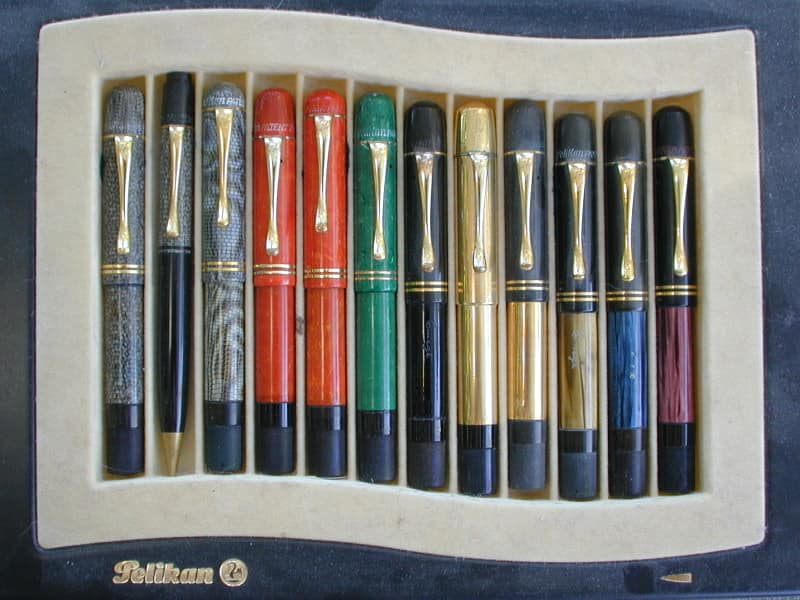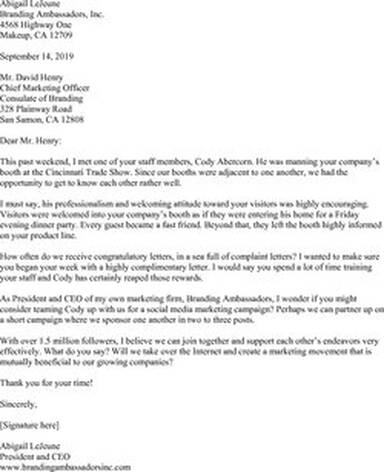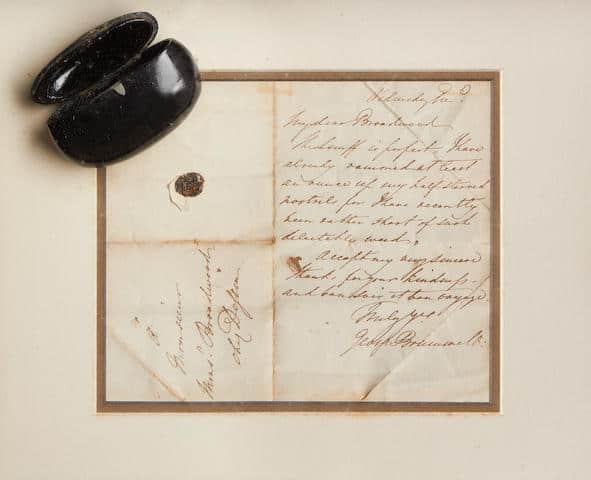
Thermographic printing offers an affordable alternative to die-cast or letterpress printing.
A basic introduction to the tools of handwritten correspondence should, for the beginner, set you on your way.
While email companies make it easy – somewhat – to port email from one provider to another, most of us suspect it could all fail one day. We can then imagine, over a series of frustrating days we will have come to realize our email from the last ten, twenty, or thirty years has vanished in the cloud, while we are served as customers through online forms and social media updates telling us “We’re working on this problem. Your business is important to us!”
Thermographic printing relies of heat to lay ink onto paper and other materials. This process can create a raised image, but unlike an embossed image, there is no debossing on the back. It is an affordable alternative to die-cast, blind embossing and letterpress stationery.
Thermographic

I am left-handed and have had to teach myself how to write properly such that my hand does not drag across the paper, smearing ink on my hand and fingers. This video, while directed to children, provides excellent advice on how to hold a pen and paper for the leftie.
Stephen King used a Waterman Fountain Pen to write his novel Dreamcatcher. In his author’s note, he wrote: “One final note. This book was written with the world’s finest word processor, a Waterman cartridge fountain pen. To write the first draft of such a long book by hand put me in touch with the language as I haven’t been in years. I even wrote one night (during a power outage) by candlelight. One rarely finds such opportunities in the twenty-first century, and they are to be savored.”
Definitely the most luxurious way to print your logo, frame, etc., is engraved on a steel or copper plate and then printed. The result is a raised logo on the one hand and a pressure mark on the other, yet it is more delicate than embossing.
Here you find an excellent comparison table between grammage and basis weight. Refer to this table so you don’t make same mistake of one of their customers: assuming 90lb (165gsm) index paper is heavier than 80lb (215 gsm) card stock.

Since envelopes did not come into general use until 1840, Regency era writers had to resort to other means to keep their correspondence sealed and private. The least expensive alternative was to wafers of flour and gum. Letters were folded to form an envelope and a person would lick the wafer to stick the paper shut.
With all the specialized tools and supplies for letter writing it is little wonder that elaborate writing desks and desk sets to store everything were common in the era. Clearly our concept of dashing off a quick text in seconds on a cell phone bears little resemblance to the production that penning even a brief letter would have been during the Regency era.
Red, blue, yellow and green writing inks were also available, each as complex to make as iron gall ink. Stationer’s made these inks available along with quills and paper. Some stationers would formulate their own ink, generating a brand loyalty in their customers.
Freshly plucked quills had to undergo extensive treatment before they could be turned into pens. The process, called quill-dutching started with plunging the quills into hot sand to remove the inner and outer membranes. The heat treatment also hardened the barrel of the quill and made it transparent. A treatment to nitric acid might be used to improve the appearance, but some thought it made the quills to brittle, so not all quills underwent this procedure. As a final step, quill dressers would trim away a section of the feathery ‘barb’ of the feather to make the pens easier to handle and take up less space in shipping. Bundles of twenty five or fifty quills were baled together and shipped to stationers’ shops.
Pencil

Not only could it be complicated to craft just the right words to convey a desired message, the very act of penning a letter was far more complex than sending off a quick text message today. ‘Dashing off a quick letter’ was hardly swift or simple process by today’s standards. A correspondent required a number of expensive supplies and specialized equipment to produce a proper letter.
The knives were necessary to recut quill pens when the tips degraded from use. They were also indispensable for maintaining the other Regency era writing implement, the pencil. They were not, though, used in trimming paper.
Art and science were required for the production of a high-quality sealing wax. Each maker tended to have their own special formula, and some included wax, while others did not. A formula from The Encyclopedia Britannica (1773), included beeswax, rosin, olive-oil and Venice turpentine. Other formulas included shellac, sandarac, rosin, pitch or mastic. “Spanish wax” contained shellac, mastic, turpentine, chalk or gypsum, color and fragrance.
Sticks of sealing wax were about seven to eight inches in length and did not have a wick. They would be held over a candle to soften, then pressed down on the paper to be sealed. A seal or signet pressed into the soft wax made any tampering with the seal evident.

Tone: Semi-formal
For signing off: Letters to people you have a good relationship with, from relatives to work associates
Tone: Informal/contemporary
For signing off: Letters to friends and family or anyone you love!
Tone: Semi-formal/modern
For addressing: People you have a good, friendly relationship with
Tone: Very formal/traditional
For addressing: People you don’t know
How to end a letter

Knowing what to write can be a little tricky, especially when you’re faced with very lovely writing paper. But, whether you’re scribing a love letter, an apology letter or a thank you letter , our how-to guide should deliver some helpful reminders and tips.
Signing off your letter is just as important as the start. Once again, think about who you are speaking to and the content. Notes to loved ones call for a conversational round-off, whilst formal letters should be finished with a traditional closing. Remember to capitalise only the first letter of your sign-off and to write your signature underneath your full name for business and legal letters.
Tone: Semi-formal/contemporary
For signing off: Letters to people you’ve written to a few times
Tone: Semi-formal/contemporary
For signing off: Letters to show your appreciation for the time or efforts of someone you know

- Know your audience. Only use technical terms or jargon if you are sure the reader will understand.
- Be clear and to the point. Do not write two pages if one will do. Leave out unnecessary details. As you re-read your letter for accuracy, ask yourself if anything in there is unnecessary information.
- Remain professional. Do not include any threats or slander in your letter, even if you are writing a complaint letter or a letter of resignation.
If you're not confident in writing addresses, learn how to write an address properly. For a few more pointers, check out our article on Business Communication Letter Writing.
Letters can be either informal or formal. An informal letter doesn't need to abide by all the above standards. They don't require a formal address at the top and "To whom it may concern" in the greeting. Rather, you can get straight to a "Dear Mary" greeting and can end with "Regards" or "Best wishes." Informal or personal letters may come in the form of email, but the premise remains the same.
Written communication is an important skill to list on a resume. And, in order to include that, letter writing should be in your wheelhouse. For other important attributes, check out the Best skills to list on a resume. There, we'll explore soft skills, such as adaptability and creativity, and hard skills, such as computer programming and web design.
A Few More Writing Tips
A cover letter should consist of approximately three body paragraphs. The first paragraph explains why you are writing, what position you want, and why you want it. The second outlines why you are the best person for the job and summarizes your skills and experience.
In the body, the first paragraph is usually an introduction setting out the reason you are writing. The next paragraphs go into more detail. The closing paragraph summarizes what you've had to say. You may want to thank the recipient or ask questions.
The closing comes after two skipped lines and can also be informal. If you want to add a P.S. or P.P.S. to your personal letter, skip another line and start the P.S. on the left-hand side of the paper.

In our current digital age, past communication practices, like sending a fax or a message via snail mail, have fallen by the wayside. And since the advent of mobile phones and text messaging, the need for formality in written communication has also languished. Still, in an age where “Thx” and “TL:DR” dominate communications, we believe that taking the time to hand-write a missive will make its recipient appreciate it all the more.
As we’ve already said, the same person who writes the card should be the one to address the envelope. Traditionally, the envelope should be addressed using honorifics and last names, as in “Ms. Joan Smith” or “Mr. Sven Raphael Schneider.” If writing to a married woman, use “Mrs.,” but use “Ms.” rather than “Miss” as the modern female equivalent for “Mr.” when writing to a single woman. “Mx.” is often the preferred honorific for gender-noncomforming individuals.
An overlooked aspect of making the message appear to be something significant is using a postage stamp, rather than having the letter run through a postal meter. You can select the image on the stamp to suit the occasion (and the reader in some cases), such as a holiday theme. Metered mail looks like business correspondence. For a truly unique touch, you might seal the letter with wax, using a signet ring or a seal made for this purpose along with the appropriate wax stick. After using the regular adhesive on the envelope, melt some of the wax onto the edge of the envelope closure and allow the pooled wax to cool for a few seconds
The rules of letter writing etiquette were also created at a time when only heterosexual relationships were acknowledged, so they need to be adjusted for same-sex relationships. Married couples would be addressed as “Mrs. Jane Smith and Mrs. Joan Smith” if they have the same surname, or “Mr. Tim Jones and Mr. John Smith” if they do not, generally with the names in alphabetical order. For all couples who aren’t married, regardless of gender, put the names on individual lines, using alphabetical order.
How to Address the Reader

When doing any piece of writing, the first two considerations should be audience and purpose. Knowing your audience and the reason for writing helps determine the proper tone, among other things. So, for an expression of sympathy, you wouldn’t want to choose a jokey card or include a lot of levity if sending a letter. Similarly, if you’re thanking an important person for a favor, it’s likely best to maintain a respectful tenor. However, it is also essential to be sincere and authentic, so your tone won’t come across as being false.
Other variations for multiple people could be “Dear Raphael, Teresa, and Preston,” or “Dear Kyle and Family.” At the end of the message comes the final name in the letter–your own. This is called the “complimentary close” or the valediction, and is traditionally made up of “Sincerely,” with your signature below it. For the sake of variety, you can try other wording such as “Cordially,” “Warm Regards,” and “Kind Regards,” or more informally, “Regards” and “Cheers.” Unless you are writing a love letter, avoid excessively sentimental closings like “Yours Faithfully” or “Yours Truly.”
Dale Carnegie, of How to Win Friends and Influence People fame, states that “[a] person’s name is to that person, the sweetest, most important sound in any language.” Therefore, make sure you do not misspell the name of the person you are writing to, as doing so will immediately alienate them. There are a great many established rules related to addressing people by name when sending them letters or cards.
